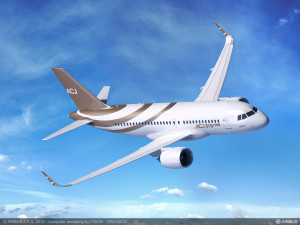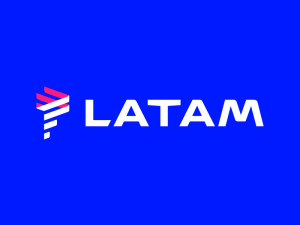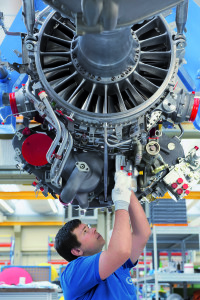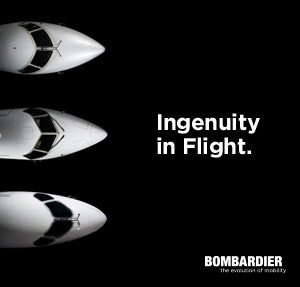GULFSTREAM G500 COMPLETES FIVE FLIGHTS
August 11, 2015
Two Additional Aircraft Preparing For Flight
SAVANNAH, Georgia, August 10, 2015 — Gulfstream Aerospace Corp. today announced that the Gulfstream G500 has completed five test flights since it first took to the skies on May 18.
During more than 15 hours of flying, the aircraft achieved a top speed of Mach 0.80 and a maximum altitude of 38,500 feet/11,735 meters. The aircraft’s longest flight was more than four hours.
Over the past several weeks, the aircraft has been undergoing planned modifications in preparation for returning to flight later this month.
“The first five flights exceeded our expectations,” said Dan Nale, senior vice president, Programs, Engineering and Test, Gulfstream. “And they demonstrated that our testing facilities on the ground are having very real benefits in the air, allowing us to identify and address issues before they’re ever seen in flight.”
Gulfstream announced the G500 and G600 family of aircraft on Oct. 14, 2014. Programs for both aircraft are progressing well. As the first G500 flight-test article undergoes modification, two more are preparing for flight and a fourth is in production. Additionally, the first G600 flight-test aircraft has begun the initial stages of production.
Together, the two programs have completed more than 36,000 hours of lab testing, and both the G600 integration test facility (ITF) and the G600 Iron Bird are now operational. The engines for the G500 and G600, the PW814GA and the PW815GA, respectively, were certified by Transport Canada in February.
The G500 and G600 offer an optimized combination of speed, wide-cabin comfort and efficiency providing best-in-class performance with advanced safety features.
The G500 has a range of 5,000 nautical miles/9,260 kilometers at Mach 0.85 or 3,800 nm/7,038 km at Mach 0.90, while the G600 can carry passengers 6,200 nm/11,482 km at Mach 0.85 and 4,800 nm/8,890 km at Mach 0.90. The maximum operating speed for both aircraft is Mach 0.925, the same maximum speed as Gulfstream’s G650 and G650ER.
The G500 and G600 also include Gulfstream’s all-new SymmetryTM Flight Deck, the most advanced, stylish, comfortable and intuitive flight deck in business aviation. The cutting-edge technology comes in the form of active control sidesticks (ACSs), integrated touchscreen controllers, next-generation enhanced vision system (EVS III), and Honeywell Primus Epic avionics.
The G500 and G600 cabins maximize comfort, with an industry-leading cabin altitude of 4,850 feet/1,578 meters at FL510 and 100 percent fresh air that boosts mental alertness and productivity while reducing fatigue.
Gulfstream anticipates certification of the G500 in 2017, with entry into service in 2018. The G600 certification is slated to follow in 2018, with entry into service in 2019.
NordStar Airlines signs GTA with AJW Engines to manage engine shop visits and deliver efficiencies
August 11, 2015
London, August 10th 2015: NordStar Airlines has signed a GTA with AJW Engines to provide engine shop visit management services for CFM56-7B engines. AJW Group has worked with the airline for several years providing specialist component support; however this is the first time that AJW Engines’ specialist services have been integrated into the programme. An experienced team of professional engineers from AJW will manage all aspects of the shop visit, supported by the strong commercial acumen of the engines division as a whole.
The AJW Group is recognised for its flexible approach across all aircraft support options and the engine management service (EMS) programme for NordStar combines special introductory rates and volume discounts. “The EMS service we offer is a tailored service whereby we continuously update the customer regarding all processes on a daily basis. In addition, we challenge the MRO to justify their repair choices keeping everyone focused” says Morgan Brown, Powerplant Engineer – AJW Engines. “This approach not only helps to safeguard the airline from unnecessary expense but also ensures they operate at maximum efficiency and safety.
“When AJW supplies a replacement engine part on behalf of NordStar from our comprehensive stock, each part is accompanied by complete industry standard paperwork. Our main objective is to keep the shop visit costs for NordStar to a minimum. We ensure the agreed turn-around-times are adhered to, and that the optimum performance to achieve the longest on-wing time is achieved.”
Operators looking for engine management, inventory consignment or parts supply can rely on AJW Engines. This growing commercial jet engines division has developed a significant aircraft engine portfolio and offers a range of integrated management solutions providing engineering services and quality overhauled condition engine parts. AJW Engines offers a wide range of CFM-60, CFM56-3/5/7, V2500 and PW4000 sales and purchasing opportunities.
Airbus sees market for ACJneo Family in Latin America
August 11, 2015
New aircraft will appeal to billionaires in the region
Airbus sees an important potential market for its new ACJneo Family in Latin America, which is home to large numbers of billionaires, as well as many large companies and governments.
�
The number of billionaires in Latin America is forecast to grow to 580 by 2017, an increase from 450 in 2012. The figures include 240 billionaires in Brazil by 2017, up from 190 in in 2012.
�
Airbus’ ACJneo Family initially comprises the ACJ319neo and ACJ320neo. The ACJ319neo will fly eight passengers 6,750nm/12,500 km – equivalent to more than 15 hours’ flying time, while the ACJ320neo will fly 25 passengers 6,000nm/11,100 km, or more than 13 hours in the air.
�
The aircraft further capitalise on the Airbus’ modern and innovative family, bringing even more city-pairs within nonstop range of what are already the widest and tallest cabins in the sky.
�
“Introducing new-generation engines, Sharklets and other new technology further improves the ability of Airbus corporate jet customers to take their lifestyles into the sky by delivering even more of the comfort and range that they want,” says Airbus Chief Operating Officer, Customers John Leahy. “These advances improve efficiency as well as range, while giving Airbus corporate jets an even cooler look.”
�
Mission capability and cabin comfort are the two most important factors for business jet customers, and the ACJneo Family delivers more of both. More range via Sharklets and new engines – CFM Internation LEAP-1As or Pratt & Whitney PW1100Gs – and greater comfort through a lower cabin-altitude in long-range cruise – plus improved baggage capacity.
�
Deliveries of the ACJ320neo and ACJ319neo are due to begin in the fourth quarter of 2018 and second quarter of 2019, respectively. Airbus has already won several orders for the ACJneo Family, including an ACJ320neo for Acropolis Aviation and an ACJ319 for Alpha Star Aviation.
�
More than 170 Airbus corporate jets have been sold to date, and they are in service worldwide, including with the governments of Brazil and Venezuela.
LATAM is Born: The New Brand for LAN Airlines, TAM Airlines and Affiliates Announced Today
August 7, 2015
· The new brand represents the creation of the largest airline group in Latin America and one of the largest in the world.
· “Connecting LATAM to the world, and bringing the world to LATAM. The airline group has grown up alongside each country in the region and has consolidated to offer clients the best network of connections and most modern fleet in Latin America. The passenger experience will improve with access to a single product and service within one network, more powerful online presence and integrated channels of communication, in addition to faster development of innovation and technology in the countries where the Group operates. LATAM will be a brand that builds a culture that is dedicated to taking care of its clients,” said Enrique Cueto, CEO of LATAM Airlines Group.
· The choice of the name LATAM, part of the consolidation of LAN and TAM, is the result of an extensive study conducted in 10 countries following the association of both airlines and their affiliates.
· LATAM Airlines Group is currently working on the gradual roll-out of the new corporate brand image over the next three years for airports, aircraft, commercial offices, web pages, and uniforms. The first changes will be visible starting in the first half of 2016 with specific dates to be announced in a timely manner.
August 6, 2015 – After an extensive integration process following the association of LAN Airlines and TAM Airlines – during which the Group made great advances in achieving synergies for internal processes, network optimization, and fleet restructuring and modernization – LATAM Airlines Group has decided to adopt a single name and identity and announces that the new brand for the largest airline group in Latin America and its affiliates will be LATAM. The new LATAM branded airline group will unite all the passenger and cargo airlines for LATAM Airlines Group: LAN Airlines and its affiliates in Peru, Argentina, Colombia and Ecuador; in addition to TAM Linhas Aéreas S.A., and its subsidiary TAM Air Transport Mercosur S.A. (TAM Airlines (Paraguay), and the cargo carriers comprised of LAN CARGO, LAN CARGO Colombia, ABSA (TAM Cargo) and Mas Air.
The decision to create a new brand is a historic milestone in the airline industry not only because this is the first time an airline group has chosen to consolidate under a single brand, but because this is the first time a Latin America based airline group aspires to become one of the best in the world.
For that reason, the new brand will incorporate the most valued strengths and characteristics of both LAN and TAM, in addition to the important histories of both carriers, 86 and 39 years respectively, during which they became part of the history of the region by contributing to its growth, development and increased connectivity.
“Out of all of the options that we were considering, the name LATAM always seemed to us to be the most natural evolution of both the LAN and TAM brands, but a period of mutual understanding and maturation was necessary to make the decision. We knew that having a single brand was essential to consolidate the connection between LAN and TAM, and the name LATAM creates a strong identity for the airlines that form the largest airline group in Latin America. The new brand is born from the desire to capture the best of both identities and legacies and consolidate them to create an even stronger one that preserves the essence of each brand – an essence that is truly Latin American,” said Mauricio Amaro, President of the Board of Directors, LATAM Airlines Group.
“With LATAM we will continue on the path of leadership that LAN and TAM started in parallel, working closely together over the past three years to implement an ambitious agenda of innovative projects for our passengers to have a better experience with us before, during and after their flight. The passenger experience will improve with access to a single product and service within one network, more powerful online presence and integrated channels of communication, in addition to faster development of innovation and technology in the countries where the Group operates. LATAM will increase optimization of our fleet, provide easier access for passengers and clients to the best network of destinations in the region while offering a new in-flight experience, updates in service and in-flight entertainment, and innovative technology that gives passengers more control over their travel experience. Our passengers have high expectations and we want to offer them service that meets those expectations.” LATAM will be a brand that builds a culture that is dedicated to taking care of its clients,” said Enrique Cueto, CEO of LATAM Airlines Group.
Cueto went on to explain in his own words the choice of the name LATAM: “LATAM Airlines Group was created by two large Latin American companies that started from zero and prospered thanks to their shared passion for flying, vision, dedication and innovation. Both companies and their respective affiliates conquered their markets and connected them with the world, promoting prosperity in the region and becoming known for their on-time performance, service and networks that won them the preference of their clients and become a part of their history. LATAM Airlines Group created a unique partnership in the industry that resulted in the largest airline group in the region. That is why we chose the name LATAM, because it honors who we were and who we want to continue to be, working together with our affiliates to be the ambassadors of a Latin America that grows and prospers, loyal to its natural and human roots – a region that never stops moving”.
The new LATAM logo
When describing the new logo, Jerome Cadier, VP of Marketing for LATAM Airlines Group said, “The logo was inspired by the identity and heritage of the region, incorporating the best of LAN and TAM. For this reason, we selected indigo and coral as the main colors for LATAM. The first represents the best of both worlds as it falls between red and blue which are the main brand colors for TAM and LAN. And the second, symbolizes energy and passion, essential attributes of the new brand. These two colors are supported by secondary colors that bring to life the diversity that is found in Latin America”.
“The implementation of rebranding in our industry is a gradual process and requires a long period of development. It will require a lot of time and effort, but as we work on the implementation of the new brand, we will continue to work in parallel to unify the in-flight experience offered by the LATAM Airlines Group airlines,” explained Cadier.
LATAM Airlines Group is currently working on the new corporate brand, a process that will take approximately three years to complete and will begin to be visible in the first half of 2016 with a gradual roll-out for airports, aircraft, commercial offices, web pages, and uniforms. Some of these change are already visible and can be observed principally in the in flight experience with new redesigned aircraft cabins, the new VIP lounges in Sao Paulo and Santiago – the largest in the region – that are open to the public and form part of the best network of lounges for frequent flyers in the region as well as digital platforms like the option to access onboard entertainment via mobile devices.
The LATAM Airlines Group carriers will be consolidated with the objective of offering unified service in alignment with the new brand. These changes will be announced to passengers and clients in a timely manner.
The Frequent Flyer Programs for LAN, TAM and its affiliates will continue making improvements to the existing programs with any changes also communicated in a timely manner.
LATAM: Consolidating Leadership in Latin America
After the association of LAN and TAM, the Group consolidated its operations in seven domestic markets in the region as well as regional networks within South America, international flights and cargo operations.
Together, both airlines have continued to operate as pioneers in the aviation industry with important achievements such as the unification of their network of passenger and cargo destinations and the renewal of their fleets, incorporating some of the most modern and efficient aircraft in the industry. LAN was the first airline to take delivery of the Boeing 787 in the Americas and TAM will be the delivery client for the Americas for the Airbus A350-900 XWB.
In addition, both companies have unified the interior design of aircraft cabins and onboard service. For the past seven consecutive years, LAN and TAM have alternated between first and second place in the Skytrax World Airlines Survey “Best Airlines in South America” award category, considered to be one of the leading authorities for levels of satisfaction for the global airline industry.
Both airlines have made investing in a sustainable operation a priority which resulted in LATAM Airlines Group becoming the first airline group in the Americas to join the Dow Jones Sustainability index in 2014.
Choosing the name LATAM
Throughout the integration process the importance of a single brand for the Group was clear. The process through which the brand was defined consisted of several stages where all possible brand scenarios were reviewed. For this process, LATAM Airlines Group hired the brand consultant Interbrand to conduct a study in 10 countries, five of them where LATAM Airlines Group has domestic passenger operations in addition to important long-haul destinations including Brazil, Chile, Peru, Argentina, the United States, Spain, England, France and Italy. The study also incorporated input from partners and the needs of clients across the markets where the Group operates, all collected in a thorough study that resulted in the creation of the new value proposition.
Among the various options, the name LATAM always stood out as the best choice for a variety of reasons:
· The best option to, from and within Latin America: LAN, TAM and their respective affiliates have a complimentary network and fleet which presents one of the largest advantages for consolidating under a single brand.
o LATAM is the group of airlines with the largest presence in the region with more than 1,500 flights per day, domestic passenger operations in seven countries, more than 140 passenger destinations in 24 countries with daily flights to Europe, the United States, Australia, the Caribbean and 144 cargo destinations in 26 countries.
o No other airline group has as powerful a presence in the region as LATAM. The LATAM brand will maintain and strengthen the leadership in connectivity to and from the region for passengers as well as cargo.
· A single travel experience with world class standards: One of the objectives of the Group is to provide a single in-flight travel experience with a world class standard of service for passengers that reflects the best that Latin America has to offer and is identified with a single brand name.
· Greater Efficiencies: LATAM Airlines Group is currently one of the 12 largest passenger and cargo airlines in the world. In the three years since the association of LAN and TAM important synergies have been achieved across different areas of the business and the transition to a single brand like LATAM will further facilitate the consolidation of advantages and benefits for customers, employees and shareholders and move the group towards the goal of being among the top three airlines in the world.
· A new culture with the best of both worlds: Before the association, LAN and TAM shared a long history and several similarities in their corporate vision in addition to a great workforce. LATAM Airlines Group has a robust team of 53,000 people around the world dedicated and passionate about achieving the goal of being one of the top three airlines in the world.
LAN Peru’s In-Flight Service Now Serving Peruvian Cuisine
August 4, 2015
Passengers on flights from Lima to Madrid, Los Angeles, Miami and New York have the opportunity to try the new Peruvian cuisine options.
Lima, Peru – August 4, 2015. – With the goal of continually improving the in-flight passenger experience, LAN Airlines affiliate LAN Peru recently began offering Peruvian inspired cuisine on flights from Lima to Madrid, Los Angeles, Miami and New York.
The new dishes are part of current in-flight cuisine testing that the Company is implementing to improve in-flight services for passengers on future menus. Based on results, the airline will determine whether or not to include Peruvian dishes permanently on the menu.
Peruvian dishes offered on these flights include causa limeña, ají de gallina, papas a la huancaína, arroz a la chiclayana con pollo y salsa de seco and arroz chaufa with breaded chicken in a peach sauce.
“We are proud to serve world renowned Peruvian cuisine to our local and visiting passengers that fly LAN Peru,” said José Raul Vargas, In-Flight Service Director for LAN Peru, who added that LAN Peru is also the official airline of the Mistura International Food Festival, which will be held in Lima, Peru from September 3rd – 13th 2015.
MTU Aero Engines the first company to obtain civil approval for the maintenance of the TP400-D6 engine
July 31, 2015
Munich, July 30, 2015 – MTU Aero Engines, Germany’s leading engine manufacturer, has received approval from the Federal Aviation Office (LBA) to maintain the propulsion system powering the A400M military transport aircraft. This makes MTU the first of the partners in Europrop International (EPI), the TP400-D6 consortium, to hold such an unlimited license for the maintenance (in accordance with EASA 145 standards) of the entire propulsion system.
�
Since the A400M military airlifter presently is – and in the foreseeable future will remain – the only application for the TP400-D6, this unlimited approval by a civil agency marks a milestone. The engine is being produced under a civil type certificate, but its operation by purely military users did not fall within the scope of the certification. “After two years of intensive discussions with representatives of civil and military agencies we have now finally reached this goal, which is of importance to the TP400-D6 program and its customers,” says Gerhard Baehr, MTU’s Director TP400-D6/Tyne Programs.
�
Plans now are to implement a set of harmonized military airworthiness rules, the EMAR (European Military Airworthiness Requirements) regulations, which are essentially based on the civil regulations, for adoption across Europe.
LAN, a member of LATAM Airlines Group, will begin operating flights from Santiago de Chile to Milan in November
July 31, 2015
· LAN will begin operating the service on November 4 of this year from Santiago de Chile, via São Paulo, Brazil.
· The company will offer 7 weekly flights on its new Boeing 787s, which will allow for a 13% increase in the number of seats offered on the route.
Santiago, July 31, 2015. – To strengthen connectivity with its international markets, today, LATAM Airlines Group began selling tickets for its Santiago – São Paulo – Milan service to be operated by LAN using its modern fleet of Boeing 787s. Tickets are available for purchase through all LAN and TAM sales channels.
Therefore, as of November 4, LAN will operate seven weekly flights from the Santiago International Airport, via São Paulo, to the Milan-Malpensa Airport.
The route operated between São Paulo and Milan is currently being operated using Airbus A330s. Beginning in November, the route will be operated by LAN using Boeing 787 airliners. Benefits of using the Boeing 787 family includes less fuel consumption as compared to similar aircraft, and reducing environmental impact and CO2 emission by 20%.
“This new flight will allow us to connect Santiago and Milan, via São Paulo, using our new Boeing 787s, which offers 13% more seats and an improved executive class, with cutting-edge in-flight entertainment, thereby allowing us to connect more people between South America and Europe. With this we reinforce our commitment to improving travel experience, reducing the environmental impact of our operations and serving as a bridge between South America and the rest of the world,” said Roberto Alvo, CEO of International Business and Alliances at LATAM Airlines Group.
The executive also touched on the renovation of the new terminal 3 at the Guarulhos Airport, mentioning its “first-class infrastructure, allowing for shorter connection times in flights via São Paulo and providing passengers with an improved travel experience.”
LATAM Airlines Group’s presence in Europe
LATAM Airlines Group currently operates five routes between South America and Europe: Madrid, Milan, London, Paris, Frankfurt and as of October 1 of this year will begin operations to Barcelona, from São Paulo. Furthermore, LAN will add three additional structural services between Santiago and Madrid as of September 2015 and TAM will strengthen its operations between São Paulo and Madrid during this year’s high season, from June 25 to September 30.
Additionally, LAN and TAM passengers have the unique opportunity of traveling to Europe using the “Multidestination” option, which allows them to reach the continent via one city and return from a different city for a very similar price to what they would pay for a round trip to a single city.
GULFSTREAM NAMES AEROCARDAL LIMITADA AS SALES REPRESENTATIVE IN CHILE
July 27, 2015
SAVANNAH, Georgia, July 27, 2015 — Gulfstream Aerospace Corp. has expanded its sales capabilities in Latin America by naming Aerocardal Limitada as a commercial and government sales representative in Chile.
“We’ve seen consistent growth in Latin America in the past five years, with more than 180 Gulfstream aircraft in service in the region,” said Scott Neal, senior vice president, Worldwide Sales and Marketing, Gulfstream. “We are pleased to have Aerocardal, a company with an excellent reputation, help us further expand the Gulfstream brand. Our customers will appreciate the focused attention and in-depth knowledge Aerocardal brings to the sales process in Chile.”
Aerocardal is a fixed-based operator and charter company located at Comodoro Arturo Merino Benitez International Airport in Santiago, Chile. The company was established in 1991 and operates international and domestic passenger charter services, as well as medical flight services. It maintains a fleet of 15 aircraft, including two Gulfstream G150s. It is one of the largest fixed-based operators and charter companies in Chile.
Aerocardal will work closely with Luiz Sandler, regional vice president, South America, Gulfstream, and Fabio Rebello, regional senior vice president, International Sales, Florida and Latin America, Gulfstream.
GULFSTREAM ADDS TWO FIELD SERVICE REPRESENTATIVES IN BRAZIL AND ONE IN MEXICO
July 27, 2015
SAVANNAH, Georgia, July 23, 2015 – Gulfstream Aerospace Corp. recently added three field service representatives (FSRs) to its customer service team in Latin America. Alexandre Nunes Pereira and João De Toni are based in São Paulo and Gerardo Tellez is based in Toluca, Mexico. All three report to Bill Fuger, senior manager, Field Service Operations, Gulfstream.
Gulfstream’s team of more than 50 FSRs serves as the liaison between the company and Gulfstream operators based in or traveling through a certain section of the world. Their responsibilities include providing technical guidance on methods and procedures related to scheduled and unscheduled maintenance, facilitating full resolution of any technical issue that arises and serving as an advisor to operators.
“We now have five FSRs that cover Latin America,” said Mitch Choquette, vice president, Customer Support. “We have enhanced our teamwith the addition of Alexandre, João and Gerardo. Their technical expertise and knowledge of their respective regions are tremendous resources for our customers.”
Pereira joined Gulfstream after a 15-year career at Embraer, where he spent more than three years as an FSR in Latin America. Other positions he held include repair analyst and technical support engineer.
Pereira, who is fluent in Portuguese and English, earned a bachelor’s degree in mechanical engineering from Brazil’s Universidade Estadual Paulista.
De Toni’s aviation career spans more than 25 years, including the last 11 as an FSR specializing in avionics technical support for Honeywell Aerospace in South America. His clients included several Gulfstream operators.
De Toni, who is fluent in English, Portuguese and Spanish, earned airframe and powerplant licenses from the U.S. Federal Aviation Administration and Brazil’s Departamento de Aviação Civil. He has a degree in electrical engineering from Brazil’s Pontifical Catholic University of Rio Grande do Sul.
Tellez spent the last four years as director of maintenance for a Toluca-based charter company that operates a G550. From 2001 to 2010, he was the maintenance supervisor and coordinator for Aerovics, S.A., a Gulfstream-authorized warranty facility in Toluca. Tellez is licensed by Mexico’s Dirección General de Aeronáutica Civil.
Boeing, Embraer to Collaborate on ecoDemonstrator Technology Tests
June 30, 2015
Environmental flight tests expand cooperation between U.S., Brazilian manufacturers
WASHINGTON, June 30, 2015 /PRNewswire/ — Boeing [NYSE: BA] and Embraer S.A. (BM&F Bovespa: EMBR3, NYSE: ERJ) today announced that they intend to collaborate to test environment-focused technologies through the ecoDemonstrator Program in a joint effort to improve aviation’s environmental performance. This expands ongoing cooperation between two of the world’s largest airplane manufacturers.
Frederico Curado, president and CEO of Embraer, and Marc Allen, president of Boeing International, signed a Memorandum of Understanding at the Brazil-U.S. Business Summit organized by the Brazil-U.S. Business Council. The business summit, hosted by the U.S. Chamber of Commerce, occurred during an official visit by Brazil’s President Dilma Rousseff with U.S. President Barack Obama.
Boeing launched its ecoDemonstrator Program in 2011 to accelerate testing and use of new technologies that can reduce fuel use, carbon emissions and noise. The company has so far tested more than 50 technologies with a Next-Generation 737-800, 787 Dreamliner and, currently, a 757. Through their collaboration, Boeing and Embraer are planning to conduct ecoDemonstrator tests with an Embraer airplane in 2016.
“Innovation is a key pillar of Embraer’s strategy, and we are pleased to continue our work with Boeing to support the long-term sustainable growth of our industry,” said Curado. “The ecoDemonstrator Program offers a new and valuable opportunity for collaboration between our companies to boost environmental development tests, benefiting customers, our industry and the society.”
“Industry leadership in today’s world requires creative and global collaborations that ignite progress on hard problems faster than ever,” said Allen. “Boeing and Embraer are both industry leaders committed to addressing aviation’s environmental goals through innovation and technology. Working together in this exciting new way, our companies will speed progress to improve aviation’s efficiency and reduce environmental impact.”
The ecoDemonstrator cooperation between Boeing and Embraer advances a relationship that began in 2012 when the manufacturers announced they would cooperate in ways that create value for both companies and their customers. Since then, the manufacturers have worked together to improve runway safety and support Embraer’s KC-390 defense aircraft program.
In addition, in 2015, Boeing and Embraer opened a joint biofuel research center in São José dos Campos, Brazil, to perform biofuel research and coordinate research with Brazilian universities and other institutions.
Boeing has worked with suppliers, airlines and government agencies on previous ecoDemonstrator flight tests. Those technologies include a new winglet and “bug-phobic” wing coatings that can improve aerodynamic efficiency, software applications that can improve in-flight efficiency and new types of sustainable aviation biofuel.
Embraer incorporates environmental requisites into product development through its Environmentally Sustainable Products Program (DIPAS). Embraer aircraft are designed with an emphasis on incorporating innovations and adhering to environmental norms. With the ecoDemonstrator platform, new technologies under development that can lessen environmental impact are tested in flight and mature faster.
<









